The IoT extends from a single constrained device to a whole range of cloud systems, all connected by a set of IoT protocols that allow devices and servers to talk to one another

When you surf the Internet or purchase a cellphone on, say, Flipkart, you use Hyper Text Transfer Protocol Secure (HTTPS), Transmission Control Protocol (TCP), Domain Name System (DNS), IPv6 or IPv4 data link layer protocols and 802.3 protocols. These are basic networking protocols inside a browser, computer’s operating system and asymmetric digital subscriber line (ADSL) router. You use these protocols even while checking an email on your computer.
Protocols are the building blocks of all networking technologies on the Internet. These are software, and size of these protocols in Windows operating system is in megabytes. Researchers all over the world are trying to reduce the size of TCP/IP protocols.
HTTP is a software protocol, which comes inbuilt in the Internet browser, such as Chrome. It sends commands to the Web server and gets replies from the same. This software listens on port number 80 and receives IP packet on 10.100.10.11 IP address.
Let us take an example. Flipkart uses the secure HTTPS protocol to communicate with the browser. This is a new protocol. It listens on port number 443 and 10.100.10.11 IP address. (Port number is a 16-bit logical number between 0 and 65535.) Here, IP address did not change, but port number did.
Port number and IP address form the socket. Hence, the Internet uses socket for communication. A secure socket opens between the browser and Flipkart’s Web server. DNS protocol resolves www.flipkart.com string to the IP address of Flipkart’s Web server. This IP address is fixed.
TCP protocol helps carry packets from the computer to Flipkart’s server, bit by bit without error. Ethernet 802.3 protocol provides packets at the local network on the physical layer of Flipkart’s office. Flipkart’s server must be connected to a LAN or optical network.
هذه القصة مأخوذة من طبعة February 2019 من Electronics For You.
ابدأ النسخة التجريبية المجانية من Magzter GOLD لمدة 7 أيام للوصول إلى آلاف القصص المتميزة المنسقة وأكثر من 9,000 مجلة وصحيفة.
بالفعل مشترك ? تسجيل الدخول
هذه القصة مأخوذة من طبعة February 2019 من Electronics For You.
ابدأ النسخة التجريبية المجانية من Magzter GOLD لمدة 7 أيام للوصول إلى آلاف القصص المتميزة المنسقة وأكثر من 9,000 مجلة وصحيفة.
بالفعل مشترك? تسجيل الدخول

STK435 IC-Based STEREO AMPLIFIER
This stereo AF amplifier uses the STK435 IC, a highly popular choice due to its simplicity.

A SEWER DRAIN SHIELD For Smart Cities
Drainage systems are vital for storm water management but often transport pollutants, especially plastics, to rivers and oceans, harming ecosystems.
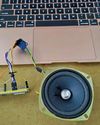
ESP32 SPEECH FUNCTION: Text To Speech
Speech capability in technology primarily has two dimensions: text to speech (TTS) and speech to text (STT). This device focuses on TTS.
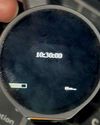
World's Smallest Programable INDUSPHONE DESIGN
This is the second part of designing the world’s smallest phone, where the UI is integrated with the basic functions of the phone.
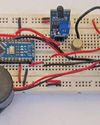
FLAME-SENSING FIRE ALARM Using An Arduino Nano
Fire safety alarms are crucial in both residential and industrial environments.
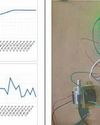
loT-Based Distribution Transformer CONDITION MONITORING SYSTEM
The proposed IoT-based distribution transformer condition monitoring system enables real-time monitoring of distribution transformers, identifying such deviations as overload conditions and overheating.
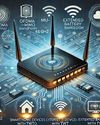
Wi-Fi 6 AND Wi-Fi 7 Powering The Next Wave of Smart Connectivity
Wi-Fi 6 leads with faster data rates and reduced latency while upcoming Wi-Fi 7's backward compatibility will facilitate gradual upgrades from Wi-Fi 6, easing transitions. However, advanced features like multi-link operation (MLO) and ultra-low latency may command a premium, making Wi-Fi 7 suited for high-end applications.

CHARGE FORWARD: High-Voltage Batteries And MSMEs Can Fuel INDIA'S EV REVOLUTION
A nuanced explanation of low- and high-voltage EV batteries by Dr Gokhale, Vice President for Battery Technology at JSW Energy, illuminates their advancements and influence. The essential role of MSMEs and academia in developing a strong EV ecosystem emerges, marking their significance for India's push towards self-reliance in this innovative field.

"MILES TO GO Before I Sleep"
A teacher illuminates the path to success through the light of knowledge, yet some teachers extend that light to society through their contributions and research. Known as the architect of the modern M3 electronic voting machine (EVM) and the voter verifiable paper audit trail (VVPAT) that transformed India's democratic process, Prof. (Dr) Rajat Moona's journey began in the modest town of Bareilly. Here is his story, as recounted to and written by EFY's Yashasvini Razdan.
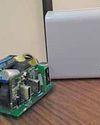
STARTUPS & INNOVATORS
1 One Charger To Charge All Your Devices | 2 Harnessing AI Technology For Efficient Pest Management | 3 Wireless Light-Based Communication With Velmenni's Technology